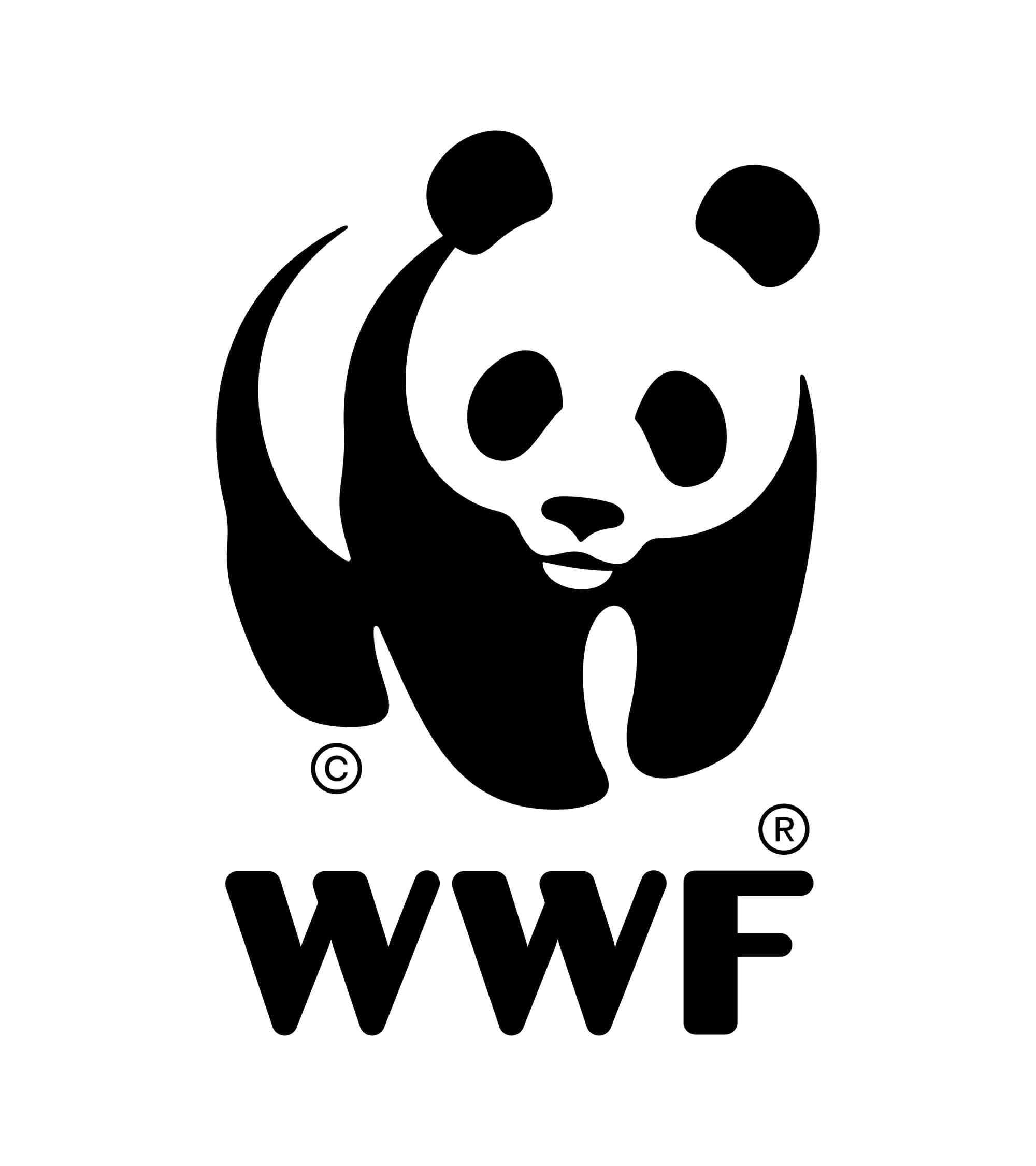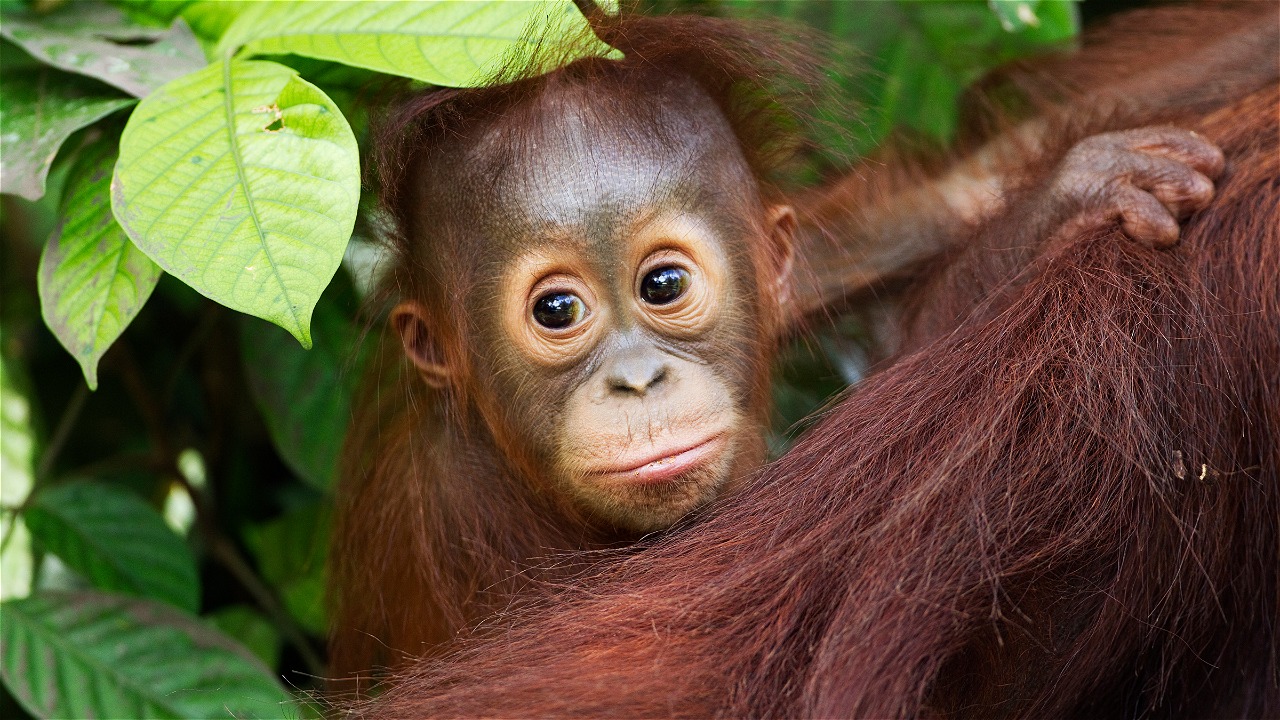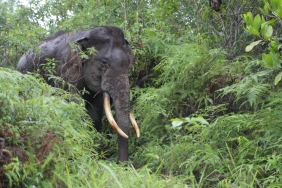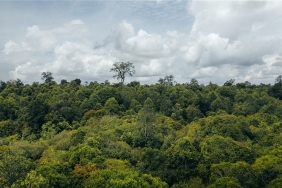SECURING “SAFE” AND "CONGENIAL" ROOM FOR ORANGUTANS
By Devy Suradji & Masayu Y.Vinanda
Jakarta (18/02)-Orangutans are so much alike us, human. Their DNA have 97% similarity to the human being. They can live up to 70 years and can have all the disease and symptoms of a human body.
Orangutan is the only great ape in Asia that can be found in Borneo island and northern Sumatra, while others such as gorilla, chimpanse and bonobo are living in Africa. The geographic difference between these two islands has made orangutan in Borneo and Sumatra are different from each other, both physically and genetically. Thus, they are divided into 2 species, Pongo pygmaeus in Borneo and Pongo abelii in Sumatra.
Based on genetical study of Bornean orangutan (Pongo pygmaeus), three orangutan subspecies are identified, namely Pongo pygmaeus pygmaeus in North of Kapuas river to the Northeast of Sarawak, Pongo pygmaeus wurmbii distributed in Southwest Kalimantan, the southern part of the Kapuas River and the western part of the Barito river and Pongo pygmaeus morio in Sabah and Eastern part of Kalimantan as far as Mahakam River. It is estimated there are approximately 57,000 individuals of orangutan living in Borneo island, that mostly live in the lowland forest and peat swamp forest. Among the three subspecies of Bornean orangutan, P.p. pygmaeus is the most threatened, with and estimated 3,000 to 4,500 individuals in West Kalimantan and marginally in Sarawak or less than eight percent of the total of Bornean orangutan population.
This charismatic Bornean species is now in the brink of extinction. More and more of them are being pouched or captured to satisfy the human greed, and their habitats are keep decreasing following the conversion of natural forest, illegal logging, forest fires, etc. Some are simply killed because they are considered as harmful menace. They have to compete and compromise its space with humans, who vigorously open the forest, taking away its home.
More than one thousand of individuals have gone through a number of treatments at the orangutan rehabilitation center, a temporary shelter for orangutans that were rescued from captivity as well as opening forest for plantations. At the rehabilitation centre, they are trained to survive in the surrounding forest reserve before they are finally released to the wild.. When these Orangutans must return to the wild, they must be released to a forest with no existing native population of Orangutan. The forest must also sustains the livelihood of this endangered species, which means enough food and space for them and secure from poaching activities.
The suitable habitats as orangutan release site is even more difficult to find since in the last decade, each year, at least 1.2 million hectare of Indonesia’s forest have been abused for large scale logging activities and forest conversion, such as for agriculture, plantations, mining and settlements. This heart-breaking fact is a proof that forest conversion has neglected the existence of this endangered species, created a serious conservation problem for orangutan, including on release program back to the forest.
“Around 70% of the estimated wild Bornean orangutan population now live outside the protected forest, particularly inside the logging concessions. This encourages WWF to work with a number of logging concessions in West Kalimantan for orangutan conservation through the integration of orangutan conservation into logging concession management plan. Studies show that Bornean orangutans can fare well in forests that are logged if reduced impact logging is implemented through Sustainable Forest Management, logging is done selectively, fruit trees are kept intact, and hunting is closely controlled,” said Chairul Saleh, WWF-Indonesia Orangutan Program Coordinator.
WWF-Indonesia has been implementing orangutan conservation project in West Kalimantan and Central Kalimantan and plan to work in East Kalimantan. In West Kalimantan, it is specifically targeted at P.p.pygmaeus in Betung Kerihun and Danau Sentarum National Park and also corridor in between the national park. Both of the national parks are located in Kapuas Hulu district. The wilidilfe corridor established as “District Strategic Areas” by Kapuas Hulu District on the district spatial planning. While in the concession areas in Ketapang District, the target sub species is P.p. wurmbii, especially in Ronga Perai orangutan priority landscape.
In Central Kalimantan, orangutan conservation project is focused in orangutan habitat in Sebangau National Park. WWF has been working on these 3 areas for orangutan conservation through various programs. The concept emphasizes on helping the management effectiveness of the park, research aspect and potential development for orangutan research-based ecotourism. The ecotourism program aims at improving the livelihood for the community living around the orangutan habitat. In order to secure orangutan habitats, WWF was also working with government at local and national level on ecosystem spatial planning development which accommodate the protection of biodiversity and its habitat.
Furthermore, WWF-Indonesia has been working with various stakeholders including the Indonesian government, other NGOs , and local people to publish technical guide for tackling human-orangutan conflict inside and around palm oil plantations. This document aims to help industry sector identify and determine strategic actions to adopt better management practices which benefit both conservation and industry.
Awareness campaign on orangutan conservation programs to specific target groups especially the local people whose living in adjacent the orangutan habitat is also part of WWF’s conservation works on orangutan . Based on the awareness program, some of orangutan poachers in wildlife corridor between Danau Betung Kerihun and Danau Sentarum national parks have been changed position to the supporter of orangutan conservation programs.
In a conclusion, saving orangutans is not a solo-project. However, it is a collaborative effort which needs collective concern and commitments from multi parties. Let's hand in hand, strengthen the synergy to secure ""safe"" and ""congenial"" room for this Bornean priceless species not only for them, but also for our living on earth.





